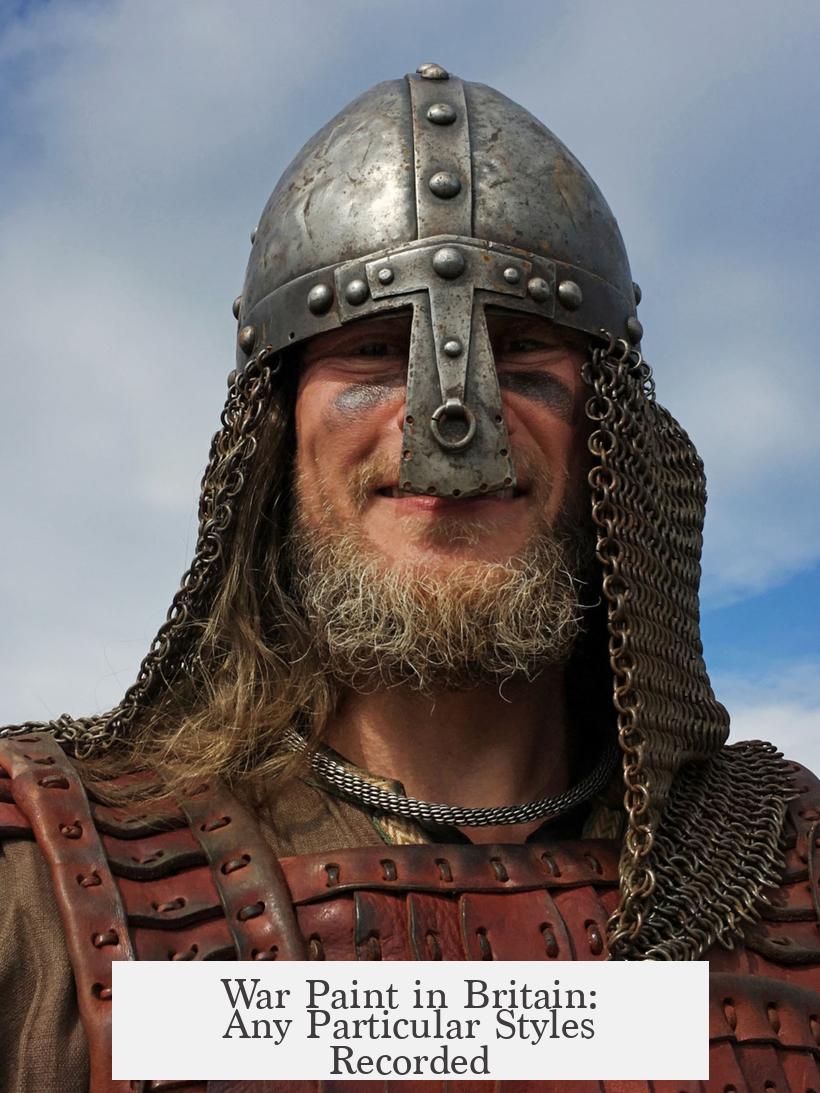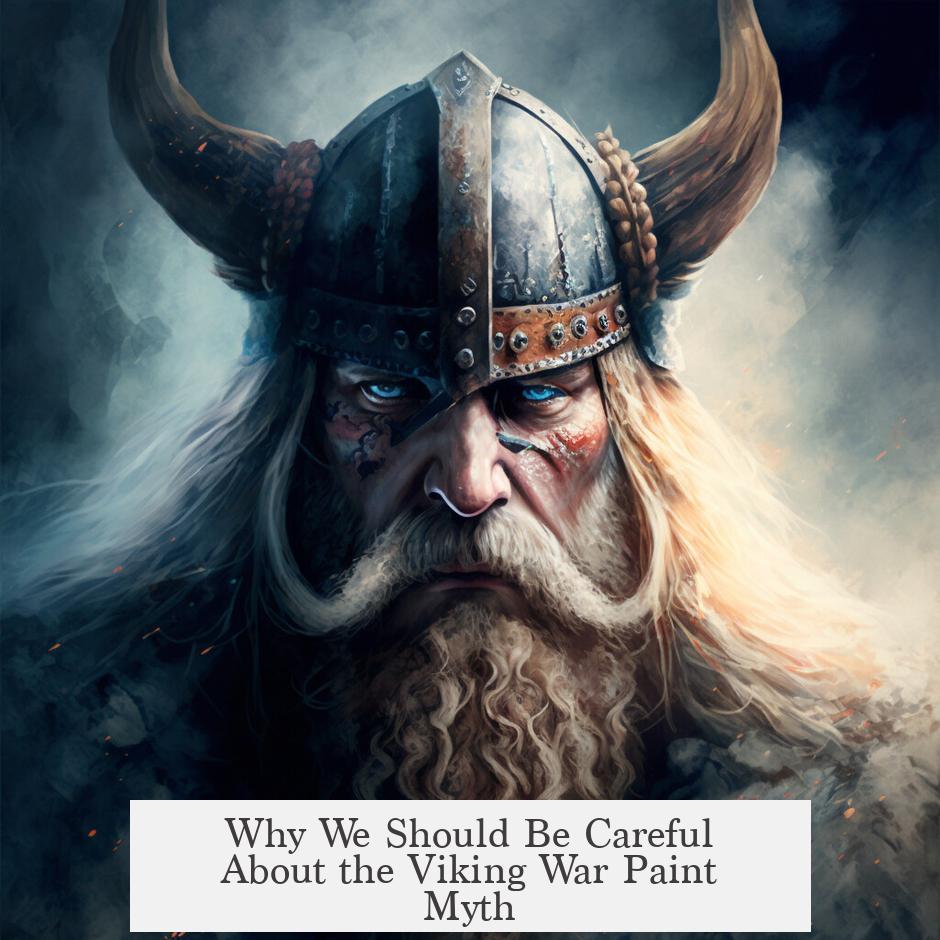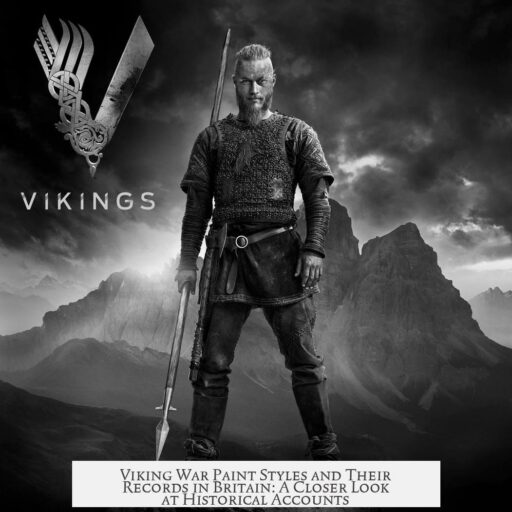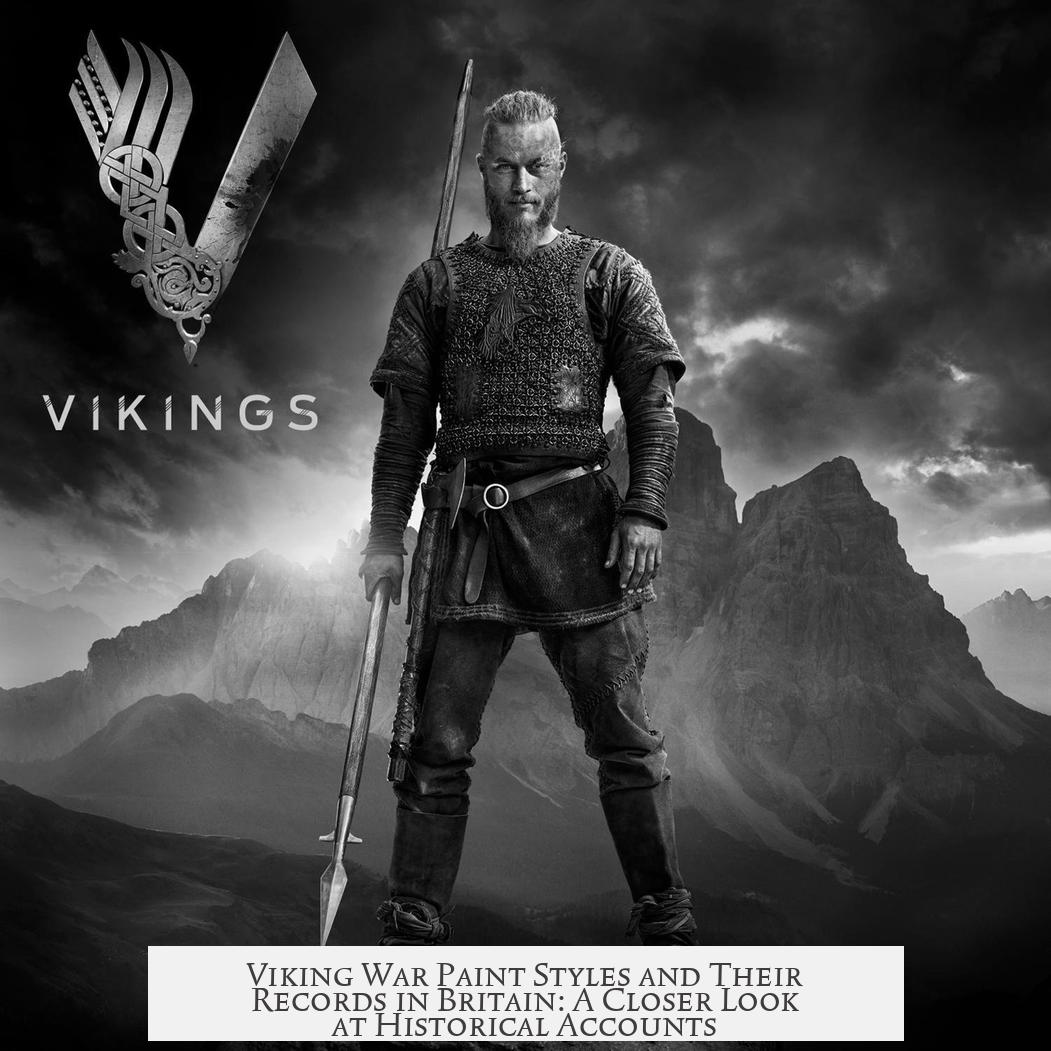Viking war paint likely varied, but clear evidence of specific styles is scarce. One key historical record, Ahmad Ibn Fadlan’s 10th-century account, describes the Rus’, a group connected to Vikings, as having dark-green lines and images covering their bodies from toes to neck. This suggests body decoration, potentially tattoos or paint. However, this description applies to a particular group by the Volga River and may not represent all Vikings.
This source stands alone. No other contemporary texts or archeological finds confirm widespread use of war paint or tattoos among Vikings. Nor do later Icelandic sagas or Continental chronicles mention war paints in Viking culture.
Dyes like woad were known and used to color textiles. Some speculate these could have doubled as body paints, especially in battle. But direct evidence linking dyes to Viking war paint is absent.
Regarding Britain, no historical sources identify distinct Viking war paint styles existing during their raids or settlement periods. The Norse presence in Britain focused more on weapons and armor than visible body decoration documented in records.
In summary:
- Ahmad Ibn Fadlan notes extensive green body decoration among Rus’, possibly tattoos or paint.
- No other records confirm Viking war paint use or specific styles in Britain.
- Woad and other dyes existed but lack direct links to war paint for Vikings.
- Viking war paint imagery is mostly speculative without corroboration.
What Did Viking War Paint Look Like? Are There Any Records of Particular War Paint Styles in Britain?

So, did Vikings really paint their faces and bodies before going to battle? The short answer: maybe — but the evidence is thin and a bit murky. This question has intrigued historians and enthusiasts alike. We imagine fierce warriors painted in wild designs, but reality is less straightforward. Let’s unpack what the sources say and what we actually know about Viking war paint, especially concerning Britain.
The image of Vikings slathered in intimidating war paint comes partly from a curious source: Ahmad Ibn Fadlan’s Risala, a 10th-century account by an Arab traveler who encountered the Rus’.
Ahmad Ibn Fadlan’s Observations: A Clue or a Contrivance?
Ibn Fadlan describes the Rus’—a group often associated with Viking descendants living near the Volga River—as being “covered in dark-green lines, pictures, and such like” from toes to neck. This implies a type of body decoration that could be tattoos or body paint. The text suggests these designs were quite elaborate.
However, **this is the only source that talks about such extensive body art on any Viking group**. No other chronicles or sagas from the Viking Age mention war paint. Nor do archaeologists find any physical evidence of pigments or tattooing tools that could confirm this practice.
Some scholars think Ibn Fadlan’s description might reflect an unusual practice by that specific Rus’ group, not Norsemen across the board. Others argue it might be a literary device contrasting the “barbaric” Rus’ against his sophisticated Arab readers. So, the famous “war paint” image may partly be a cultural exaggeration or misunderstanding.
War Paint in Britain: Any Particular Styles Recorded?

When Vikings raided or settled in Britain, there’s no solid record of them using war paint there either. British chroniclers, who hated the Vikings for their raids, never describe painted warriors. Nor do Anglo-Saxon or Norse sagas mention body or face paint before battle.
This absence is notable. If Viking warriors had painted stripes or symbols, wouldn’t hostile chroniclers mention such vivid and terrifying battle preparations? The silence suggests that painting either wasn’t common or wasn’t considered important enough to record.
Could Vikings Have Used Woad or Other Natural Dyes?
Now, here’s an angle to consider: while direct evidence of war paint is missing, Vikings certainly had access to dyes like woad. Woad was commonly used to dye textiles blue-green. And since natural dyes existed, it’s plausible some warriors experimented with painting their skin or faces.
But, here is the kicker—there’s just no archaeological or textual proof that woad was actually applied as body paint by Vikings in Britain. Dyes might have been strictly for clothing or luxury goods. Using woad as pigment to mark the skin could stain easily and fade. This would explain the lack of preserved evidence.
Why We Should Be Careful About the Viking War Paint Myth

The popular image of Vikings painting their faces with blue or green war paint likely owes much to Victorian romanticism and modern pop culture. Films and TV love the visual flair of painted warriors charging fiercely into battle. This helps sell tales of Viking ferocity but may distort the historical truth.
Think about it: the Vikings were practical. Their weapons and ships got the job done. Extra paint? Probably considered unnecessary or even a hindrance. Plus, harsh northern climates and frequent battles would wear away any paint quickly.
What Could Be Realistic Viking Body Decoration?
- Tattoos? There’s intriguing but inconclusive evidence. Forensic archaeology has recovered iron-age tattooing tools suggesting tattooing was known in northern Europe before Vikings.
- Hair and beard styles? Absolutely. The Vikings took great pride in grooming and elaborate hairstyles which could inspire intimidation.
- Clothing and armor display? Definitely a key part of Viking battle appearance.
Since direct proof of war paint is lacking, it’s safer to think they highlighted their warrior status with hairstyles, clothing, weapons, and perhaps subtle body art — but not necessarily bold, face-covering paint like warriors in some other cultures.
Summary: The Truth About Viking War Paint
| Fact | Details |
|---|---|
| Historical Record | Ibn Fadlan’s description of colored body lines on the Rus’, no other corroboration. |
| Archaeological Evidence | No physical traces of war paint or pigments found on Viking remains. |
| Dye Availability | Woad and other dyes were available, mainly for textiles, less likely for skin paint. |
| British Chronicles | No mentions of war paint on Vikings; silence suggests it wasn’t common. |
In essence, while the idea of fearsome blue-faced Vikings rages on in stories, the historical record advises caution. Instead of elaborate war paint, Vikings likely focused on their weapons, ships, and tactics. Still, one can’t help but wonder — if just for a moment — what it would be like to catch a glimpse of those “dark-green lines” Ibn Fadlan talked about. Maybe a secret Viking fashion statement lost to time.
Got any thoughts? Could war paint have played a minor role no one noticed? Or was it just a popular myth? History leaves room for debate!




